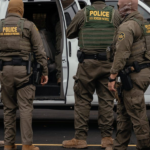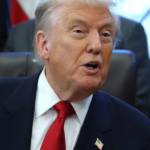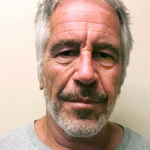U.S. Defense Secretary Pete Hegseth was in Vietnam on Sunday, reaffirming a partnership built on healing the scars of the Vietnam War in a trip that will test whether Washington can reassure a vital but wary partner.
At the end of his talks with Vietnamese Defense Minister Phan Van Giang, Hegseth handed over a leather box, a belt and a small knife — wartime artifacts once taken by U.S. soldiers during the Vietnam War.
Such returns have become part of broader reconciliation efforts between the two countries, with similar relics — including letters, identification tags and photographs — handed back to the U.S. in recent years.
“Today we will exchange artifacts and information from the war with the goal of helping family members in both countries find peace,” Hegseth said.
The visible recommitment to these projects could help stabilize relations and “create space” for further defense cooperation, said Nguyen Khac Giang, a visiting fellow in the Vietnam Studies Program at Singapore’s ISEAS–Yusof Ishak Institute.
“War legacy cooperation is the foundation enabling deeper defense ties,” he said. “For Washington, it demonstrates long-term responsibility and goodwill to solve lingering war consequences. For Hanoi, it provides essential political cover for expanding relations with a former adversary.”
Giang said the U.S. defense chief’s visit comes at a crucial moment. Vietnam’s Communist Party chief, To Lam, visited North Korea in early October — the first such trip in nearly two decades — while reports suggest Hanoi may pursue the purchase of 40 Russian Su-35 fighter jets. “Vietnam is hedging against doubts about U.S. reliability in the Indo-Pacific,” he said.
“Hegseth’s visit demonstrates Vietnam’s deliberate deepening of defense ties with the U.S., but strictly on Hanoi’s terms,” Giang said.









